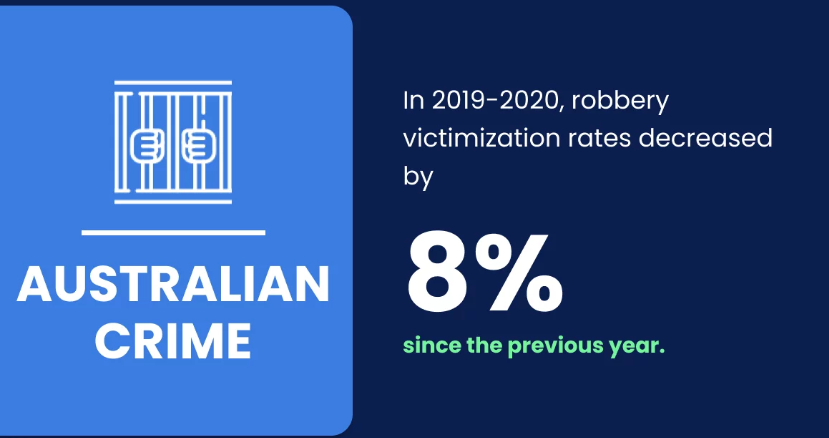|
Getting your Trinity Audio player ready...
|
What type of crime occurs the most often in your area? The answer will surprise you. In some places, murder is the leading cause of death, whereas in other areas, it’s suicide or car accidents. Lets take a look at crime rate in Australia and its Statistics.
We live in a world where violence is prevalent. Whether its the wars between countries, terrorist attacks, or gang shootings, the incidence of violent crimes are steadily increasing. So what happens when someone is murdered? Who pays for their funeral?
How does the family cope with grief? These questions can be especially challenging for families of homicide victims. This review focuses on Crime in Australia, with detailed statistical data collected from regions and classifications across the nation.

Crime Overview
What is Crime & Criminal Justice?
The National Law Enforcement Officers Memorial Fund, which tracks law enforcement deaths each year, says there were 807 law enforcement officers killed on duty from 2010 to 2019. Most were shot; others died in car crashes, while some succumbed to illness or old age during this period. The number of police officers slain since Jan 1, 2017, stands at 31 as of June 15th.
Crime and criminal justice refers to how people violate laws, get arrested, convicted, punished, and rehabilitated, as well as the policies, systems, and institutions that respond to these violations. Violent crime includes homicides, assaults and robberies.
Crimes against Women and Children In Australia
Are women being victimized more than men? Are children in danger more now than they were before? The truth may shock you! Homicide rates among females tumble through the decade, hitting a gross decrease of 2%. But overall, females still experience higher incidences of robbery, rape/sexual assault and physical abuse compared to males.
Though recent years, women are increasingly starting to experience sexual harassment as well as domestic violence. It has become an epidemic in our society.
White Collar Crime in Australia
An individual who uses his/her position of power to take advantage of another person usually through fraud, deception or a breach of trust, commits a white collar crime. It may not involve force or physical harm but involves the loss of money or property.
In recent years, we see more cases of white collar crime because technology makes it easier for individuals to commit offences from anywhere around the globe. While white-collar crimes are still relatively uncommon in comparison to other forms of criminal activity, the number of cases continues to increase
According to one study, the total cost of all white-collar crimes was $300 billion in 2021. This figure represents a 9 percent increase from what previous estimates put out.
Conclusion on Crime in Australia
The two most commonly heard terms used to describe offenders are perpetrator and offender. An offender is simply one who commits a crime, regardless of whether he/she receives punishment or not. If the offender indeed faces punishment, they earn the labels of convict or prisoner.
On the other hand, most criminal offenses result in no punishment or just minor fines. Summing it up, Australia is a relatively safer nation, although crimes against the female population continue to be a challenge.
